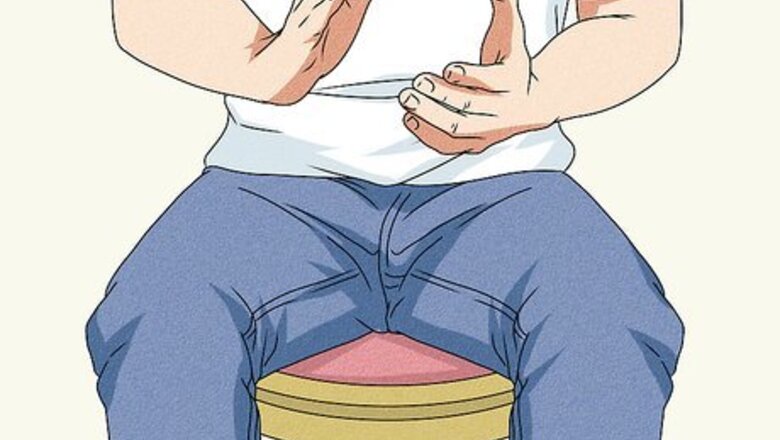
views
Playing a Basic Galloping Rhythm
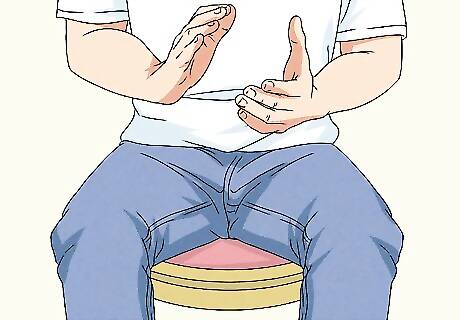
Clap your hands just above your thighs. You can hambone while you’re sitting or standing. Keep your non-dominant hand face-up so it’s about 6 inches (15 cm) above your lap. Hit the middle of your open palm using your dominant hand. Strike your palm with your fingers to make the loudest clap. Avoid hitting your palms together since you won’t make as loud of a noise. Clap as gently as you can while still making a noise so your hands don’t get sore.
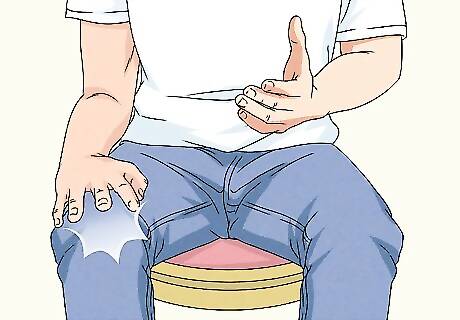
Slap your knee with your dominant hand. Immediately after you clap, slide your dominant hand out of your palm and down toward your leg. Strike the top of your knee with your fingers to make a lighter patting sound. Bring your hand straight down to your side to finish the motion. If you want to make a louder sound, try hitting the top of your thigh with your hand instead. Wearing pants or jeans prevents you from getting as sore while you hambone, but you can also play on your bare skin. Avoid wearing any baggy pants when you hambone since it could muffle the sound.
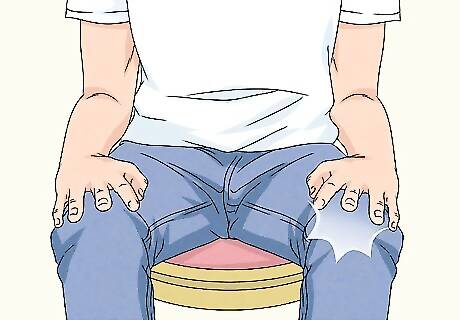
Hit your other knee with your non-dominant hand. Right when you hear the slap on your first knee, lip your non-dominant hand over so it’s face-down. Swing your arm down so you slap the top of your other knee with your palm. Slide your hand off your leg until it’s straight down. You can also strike the same knee with both hands if it’s easier for you to do.
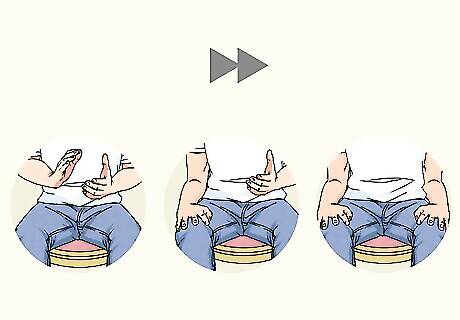
Increase your speed as you get more comfortable playing. Bring your hands back up and clap to start the rhythm again. Practice the basic motions slowly at first until you get used to them and make consistent sounds with each of your hits. Start picking up the pace so you play the rhythm faster each time. As you speed up, the hits will begin to sound like a horse galloping. If you have trouble keeping a steady rhythm, try tapping your foot to the beat whenever you hit your second knee.
Learning the Hambone Song
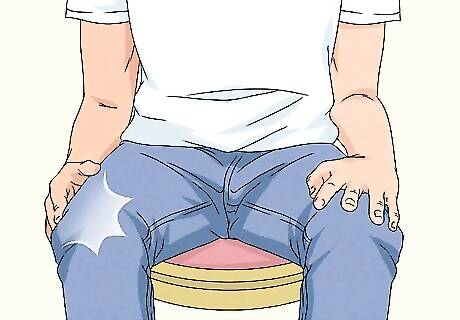
Bring your dominant hand up to hit the side of your thigh. You can hambone while you’re standing or sitting, so choose what’s most comfortable for you. Start with your dominant hand straight down at your side with an open palm. Quickly swing your hand forward to strike the side of your thigh. Don’t slap yourself too hard, or else you’ll get sore and it will hurt to keep playing. Try to hit your thigh with only your fingertips to make a quieter sound.
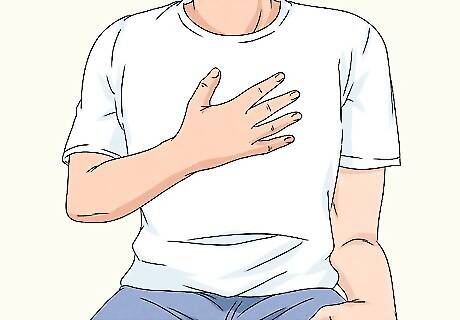
Slap the middle of your chest with the same hand. Continuing the motion with your hand, bring your hand up to the center of your chest. Hit your sternum with the tips of your fingers to make a thumping sound that’s similar to a bass drum. Keep your wrists loose throughout the movement, or else it will be more difficult to perform.
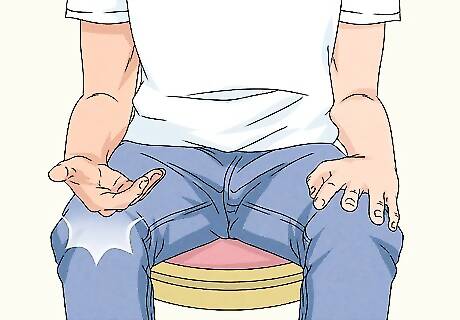
Hit your upper thigh with the back of your hand. Drop your hand down from your chest, keeping your palm face-up. Strike your upper thigh with the backs of your fingers to make a quick patting sound. Put your hand straight down at your side again to follow through with the hit. Make sure there’s nothing in your pockets that you may accidentally hit since it will dampen the sound and make your fingers more sore.
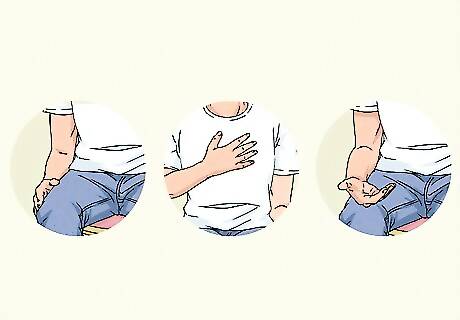
Repeat the same three hits again. Now that you’re back in your starting position, immediately bring your hand up again to hit the side of your thigh. Keep moving your hand up until you hit your chest with your fingers. Then, drop your hand back down so you hit the top of your thigh again.
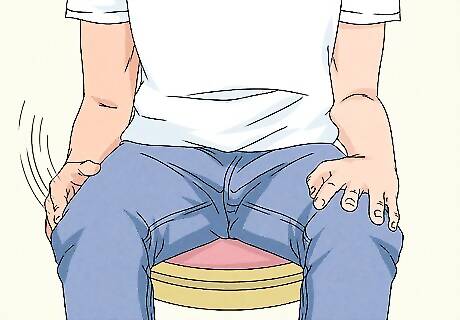
Strike the side of your thigh for the final note. Slap your thigh one more time with your palm to make it slightly louder than all your other hits. After you hit your thigh for the last time, bring your hand back down to your side again and rest for a beat. Always leave a beat of silence after your last hit to add more emphasis to it.
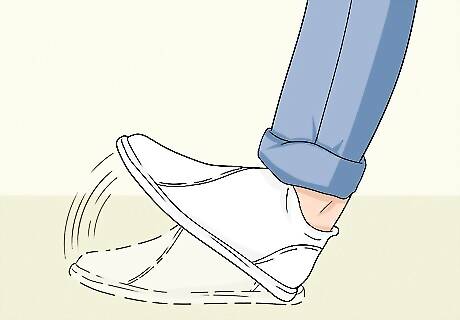
Repeat the rhythm to keep a steady beat. Tap your foot to keep a steady beat. While you’re playing your rhythm, hit the side of your thigh at the same time you tap your foot. Start slowly going through the rhythm at first until you get used to doing it in one fluid motion. Once you feel comfortable performing slowly, increase the tempo so you can improve how fast you’re playing. It can be difficult to master the rhythm and motions when you’re first learning, so keep practicing whenever you can until you see improvements.
Freestyling Different Techniques

Practice using both hands at the same time. While you can just hambone with your dominant arm, you’ll be able to make more complex rhythms using both of your arms. When you play the rhythm of the hambone song, try doing the same motions with your non-dominant hand and your other thigh. It will feel awkward at first, so start slowly and slowly increase your speed as you get more comfortable performing. Alternate which hands you use while you’re playing so you don’t get as sore on one side of your body. As you get more comfortable using your non-dominant hand, try hitting the same leg with both hands. One hand will strike the outside of your thigh while your other will hit your inner thigh.
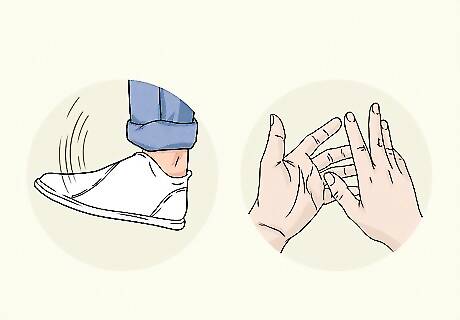
Add claps and stomps to keep a steady beat. Throughout your rhythms, tap your foot loudly on the ground to keep the beat. If you want to make a louder noise, pick your entire foot off the ground and plant it on the ground. If you want to add emphasis to your rhythm, try clapping rather than slapping the side of your thigh. Stomping works best if you’re performing on a hard, solid surface since it will make the most noise.

Alternate between slapping your knee and your palm for a fast rhythm. Hold non-dominant hand over the knee on your dominant side with your palm face-down. Keep your dominant hand in between your knee and your other hand. Slap your knee with your dominant hand. Immediately lift your hand to strike your non-dominant palm with the back of your hand. Hit your knee with your dominant hand one more time. Then, strike your other knee using your non-dominant hand. Move your dominant hand above your other knee and hit it with the back of your dominant hand. Hit the back of your hand just below the knuckles to get the fullest sound. It may take a few tries before you master your hand movements, so keep practicing and don’t get discouraged.
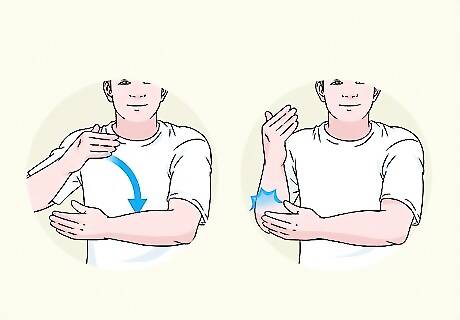
Try hitting your elbows and forearms for a snappier sound. Hold your non-dominant arm in front of you with your elbow bent to 90 degrees and your palm facing your body. Raise your dominant hand above your head and bring it down between your body and non-dominant arm. Strike the base of your forearm with the back of your fingers as you swing your hand down. Then lift your arm back up again to hit the bottom of your forearm with your fingers. Finally, slap the elbow on your dominant arm with your non-dominant hand. This creates a fun variation on the galloping pattern that you can incorporate into a routine or rhythm. Roll up long-sleeved shirts before you start playing, or else the hits will sound muffled.

Tap on your cheeks while opening your mouth to play different pitches. Open your mouth as far as you can and form your lips into a O-shape. Put your fingertips on your cheeks and alternate patting each side. Make the O-shape smaller to make sounds that are higher pitched and larger to make the note go lower. Be careful not to slap your face too hard while you’re performing. You only need to tap your cheeks lightly.
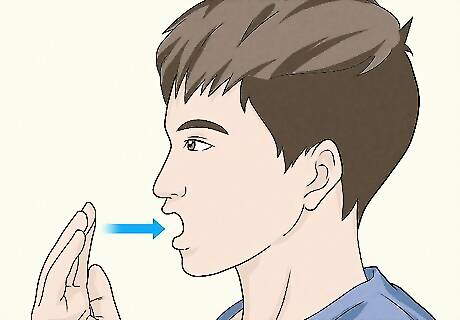
Hit your open mouth if you want to make a loud popping sound. Open your mouth as wide as you can and tighten your lips into an O-shape. Keep your fingers together on your hand and hit your lips so you cover your mouth. The popping noise will add emphasis to your rhythm and make it sound more fun. You may be able to change the pitch of the sound by making your mouth bigger or smaller.
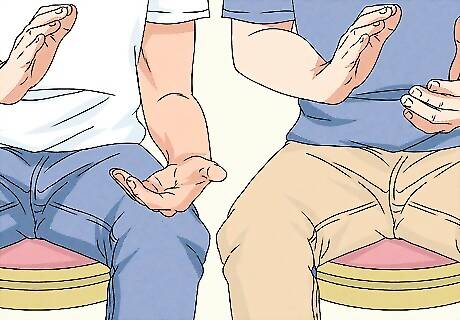
Hambone with a partner to make louder and more complex rhythms. Ask some friends to practice and play the same rhythms as you. Both tap your feet to the same beat so you don’t slow down or rush the rhythm. Once you’re able to play the same thing together in time, try playing different rhythms to the same beat to add more layers and complexity to your song.


















Comments
0 comment